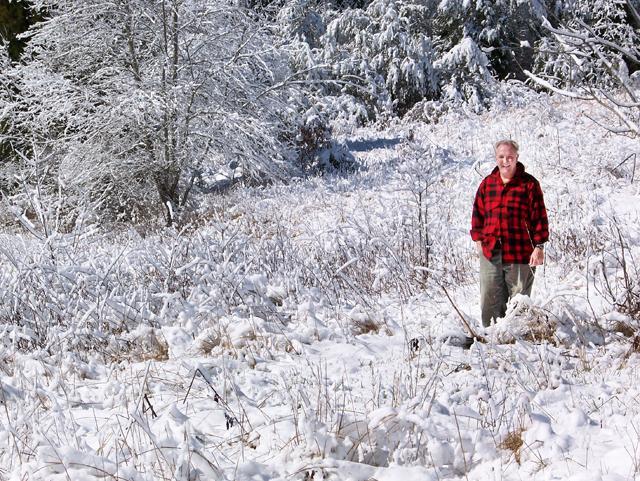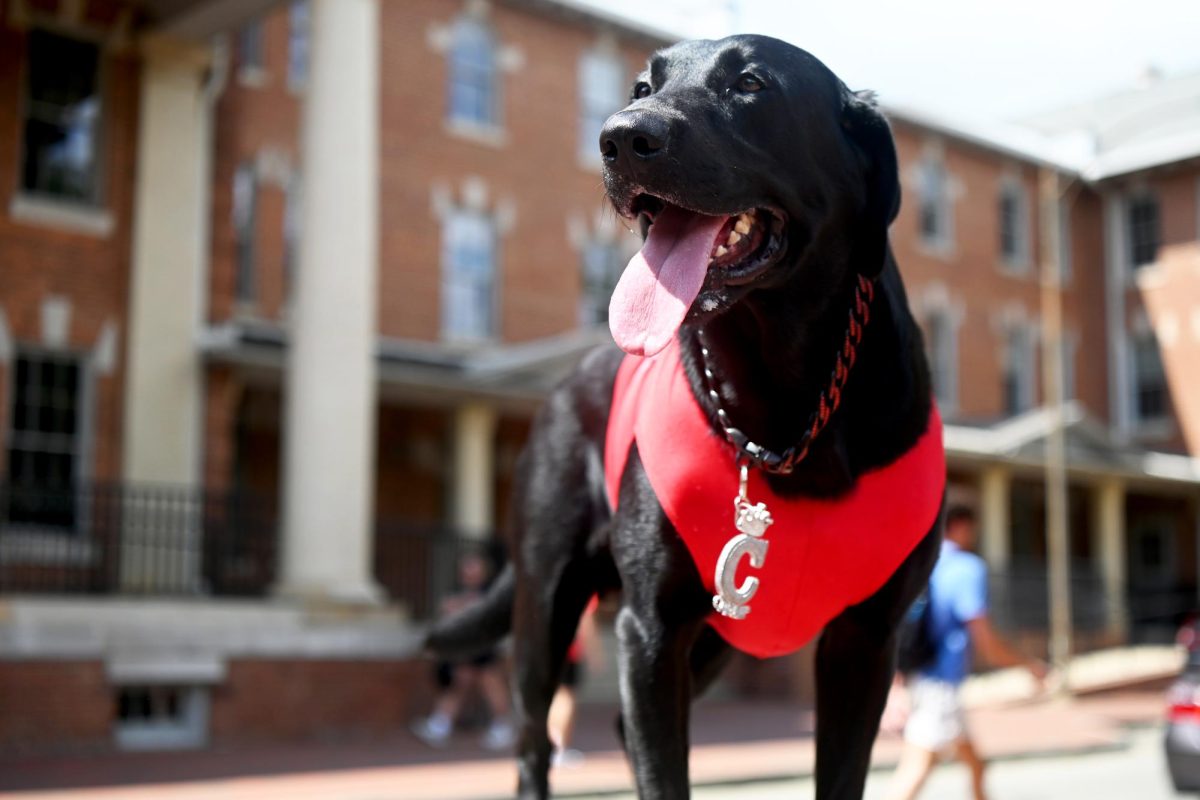From experiences with coyotes, alligators, and bears, John Wooding has seen it all. On one specific occasion, he was putting a radio transmitter collar around the neck of a tranquilized 300-pound bear when the bear suddenly woke up. Wooding was so startled that he ran into a tree, almost knocking himself unconscious.
Wooding has a continuous list of comparable stories. He graduated from N.C . State with a degree in wildlife biology and has since done a variety of different work including research, trapping and biological consulting. He’s done so many different things that he can’t really decide on a job title, and describes himself instead as a “biologist-on-contract.”
“[I do] wildlife surveys, wildlife research, wildlife management; everything related to wildlife,” Wooding said.
Wooding is most well known for his work with coyotes, which he started studying for his master’s degree, and then went on to further research later.
“The goal was to learn what they ate, and the second part was to look at how they interacted with foxes,” Wooding said about one of his more recent coyote studies.
“People had noticed that when coyotes moved into an area, the foxes seemed to disappear,” Wooding said. Wooding studied the reasons why the coyotes were driving out the foxes.
One might say coyotes are Wooding’s specialty – he’s written a book called The Coyote in Florida – but Wooding doesn’t like to think so.
“I’ve done all kinds of work … all kinds of things,” said Wooding .
For example, he’s done many projects about native Florida wildlife. He’s studied the diets, movements, and conservation of black bears, as well as a study on fox squirrels that concentrated on their movement and mating habits.
He recently also helped out on a project about gopher tortoises. These tortoises lived in holes in the ground, and suffer from an upper respiratory disease – sort of like the turtle version of tuberculosis.
“The work showed that the only animals that got the disease were the adults – the juveniles didn’t get the disease,” Wooding said.
They found that turtles sparring for mates or engaging in mating rituals bump their runny noses, passing the disease that way – something nobody had known before.
“[Environmental research] just sort of builds on the knowledge that other people have gathered,” Wooding said. “What it will be is that one person will know a little bit, and another person will come in and do a study and add some more to it, and incrementally through all of it you gain an understanding of the animal. All the work that I’ve done, I think of like that,” Wooding said.
Wooding has collected a large set of stories about his misadventures working with animals over the years. For example, while doing the project on gopher tortoises, they used a special camera to look down into the tortoises’ holes.
“We started to look in the hole for a tortoise, but it turns out the hole was occupied by a skunk,” Wooding said, laughing. “We just dropped the camera and ran.”
While studying raccoons in the Everglades to test the amount of mercury humans were releasing into the ecosystem, Wooding had an interesting time actually catching his raccoon specimens.
“I set traps and baited them with cookies,” Wooding said.
Wooding also participated in a project in Florida to estimate the population size of alligators.
“We were in the swamp, and to go from one little patch of vegetation to the other… you had to use boards to connect clumps of vegetation. They were called Jesus boards because you looked like you were walking on the water through the swamp,” Wooding said.
That project is also an example of how his job can put him in dangerous situations while working with wildlife. His job was to catch and tag alligators, and one in particular did not take kindly to being trapped.
“He hit my friend with his tail – lifted him up and threw him out of the boat,” Wooding said.
Overall though, Wooding thinks the rewards have been worth the risk.
“I’ve thoroughly enjoyed the jobs. They’ve been a lot of fun,” Wooding said.
He remembers in particular working with a team on the preservation of manatees. There was a recreational area with a lot of businesses that would bring people out to snorkel and swim with creatures, but conservationists were afraid that the people were scaring the manatees out of the spring. Wooding was hired to test the actual human impact.
“It was wintertime and the water was warm – that’s why they would come [into the spring]. They can’t stand cold weather,” Wooding said. The combination caused steam to come out of their noses every time they surfaced.
“It looked almost like a dragon breathing – it would hiss too. It was wonderful,” Wooding said.
Now Wooding doesn’t do as much research – he works as a consulting biologist. He mostly studies construction sites to see if the building will affect wildlife on the property, but also conducts deer surveys, to help with increasing or decreasing the population.
“There’s all kinds of different work [for environmental biology majors],” Wooding said. “I’m a big fan of State; it prepared me well for everything I experienced over the past 30 years work-wise.”




